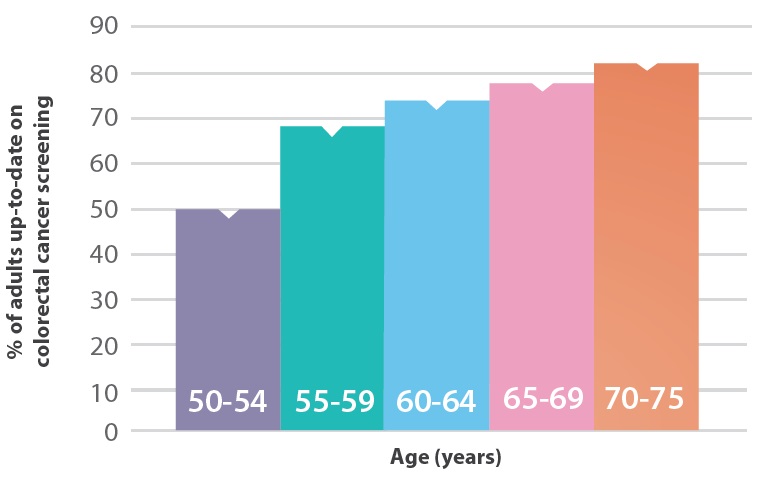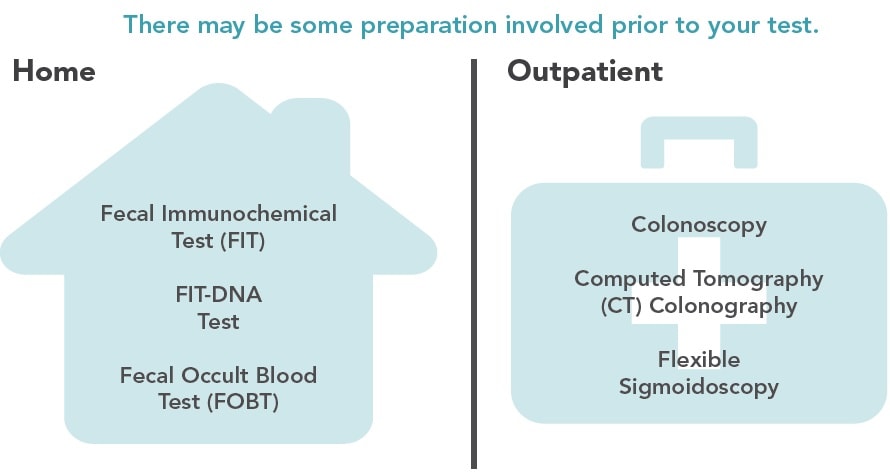Data Visualization: Screening for colorectal cancer
SOURCE: CDC 2018 Behavioral Risk Factor Surveillance System
Bar chart showing that people in their early 50s delay getting screened for colorectal cancer.
Among adults age 50–54, 50.0% were up to date with screening.
Among adults age 55–59, 68.0% were up to date with screening.
Among adults 60–64, 72.7% were up to date with screening.
Among adults 65–69, 77.1% were up to date with screening.
Among adults 70–75, 81.3% were up to date with screening.
SOURCE: CDC Vital Signs, March 2020
Home
A graphic of a house showing the three colorectal cancer screening tests that can be done at home: the Fecal Immunochemical Test (FIT), the FIT-DNA Test, and the Fecal Occult Blood Test (FOBT).
Outpatient
A graphic of a doctor’s bag showing the tests that can be done on an outpatient basis, including Colonoscopy, Computed Tomography (CT) Colonography, and Flexible Sigmoidoscopy.
For More Information
1-800-CDC-INFO (232-4636)
TTY: 1-888-232-6348
Web: www.cdc.gov
Centers for Disease Control and Prevention
1600 Clifton Road NE
Atlanta, GA 30333
Publication date: March 12, 2020

